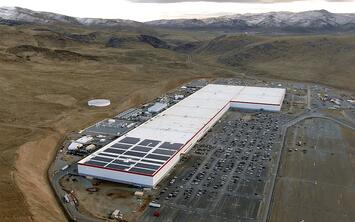
In 2007, I interviewed Vaclav Smil by email. I asked the Canadian polymath and prolific author a simple question: why are so many people so easily duped when it comes to discussions about energy and power?
He replied: “There has never been such a depth of scientific illiteracy and basic innumeracy as we see today. Without any physical, chemical, and biological fundamentals, and with equally poor understanding of basic economic forces, it is no wonder that people will believe anything.”
I am reusing that quote from Smil (who is one of my favorite writers on energy and power) because it’s germane to a report published on Wednesday by Tesla Inc. called “Master Plan Part 3: Sustainable Energy for All of Earth.” The 41-page document is the latest in a shelf-full of studies I’ve endured over the past decade or so that have been produced by academics who work at expensive universities like Stanford, Princeton, and Cal-Berkeley.
The studies are packed with elaborate graphics, complicated spreadsheets, and Dallas-size assumptions. And all of them make almost identical claims about how the U.S., or even the entire world, can be powered solely with wind, solar, and batteries, with maybe a lagniappe of nuclear and hydropower on the side. All of them downplay the obvious problems, including the ridiculous amount of land that will be needed, the raging backlash in rural America against the encroachment of big wind and solar projects, the difficulty of building high-voltage transmission, and the need for massive amounts of mining, metals, and magnets to make their schemes work.
In all of those facets, the Tesla paper is familiar. And like the others, it doesn’t contain the word “transformer” even though distribution transformers (and large transformers) are critical pieces of hardware and are in desperately short supply. (See my last piece, “Untransformed.”)
Tesla’s Master Plan claims our “current energy economy is wasteful,” and that a “fully electrified and sustainable economy is within reach through the actions in this paper.” Those actions include (again, a familiar list) repowering the grid with renewables, switching to electric vehicles and heat pumps, electrifying high-temperature heat delivery and hydrogen production, sustainably fuel planes and boats, and “manufacture the sustainable energy economy.” Although the paper doesn’t give exact projections, it uses a “20-year horizon” and claims that building the infrastructure for a “sustainable energy economy will cost $10 trillion” while continuing to rely on hydrocarbons will cost, they claim, about $14 trillion.
There’s a peck of other numbers and claims in the scheme, including the ridiculous assumption that 12.2 terawatts of wind energy capacity will require less land than what’s needed for 18.3 terawatts of solar capacity. Further, there’s nothing that helps readers put those numbers into any relevant context.
Read the rest of this piece at Robert Bryce Substack.
Robert Bryce is a Texas-based author, journalist, film producer, and podcaster. His articles have appeared in a myriad of publications including the Wall Street Journal, New York Times, Forbes, Time, Austin Chronicle, and Sydney Morning Herald.
Photo: SMNT via Wikimedia under CC 4.0 License.












